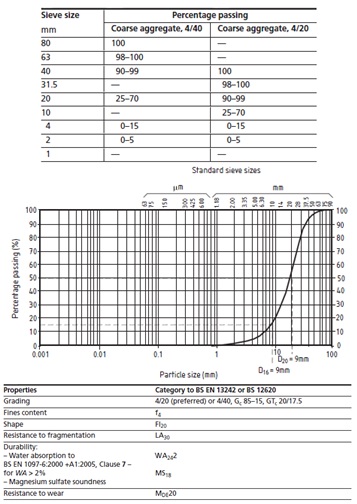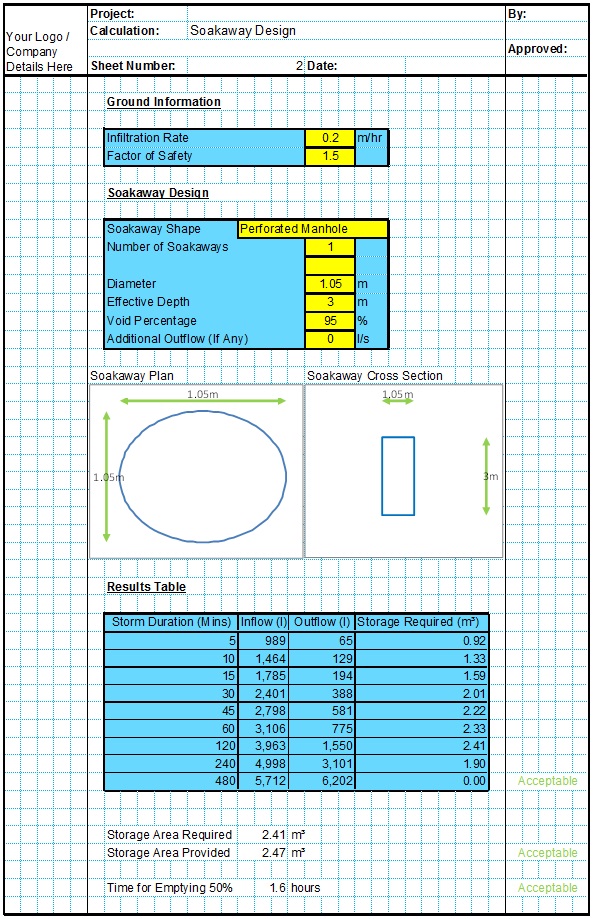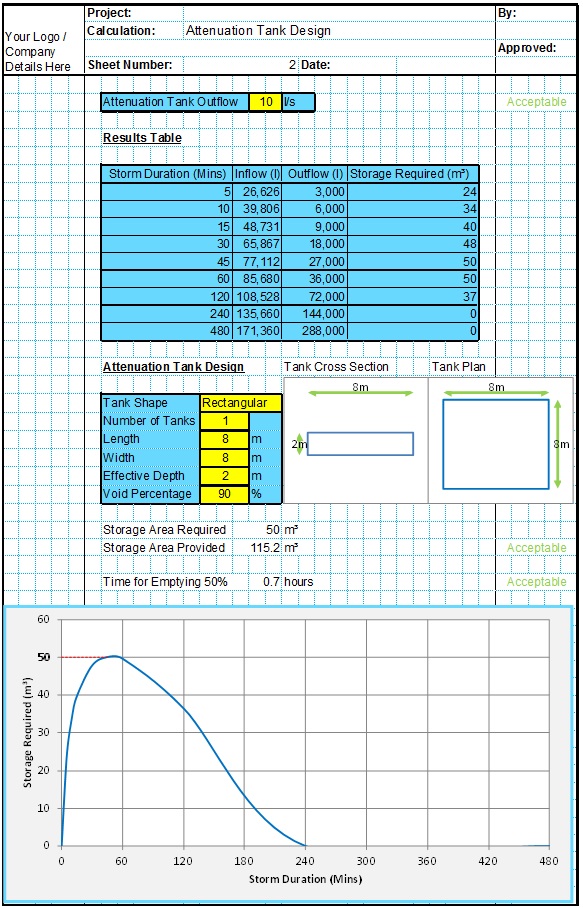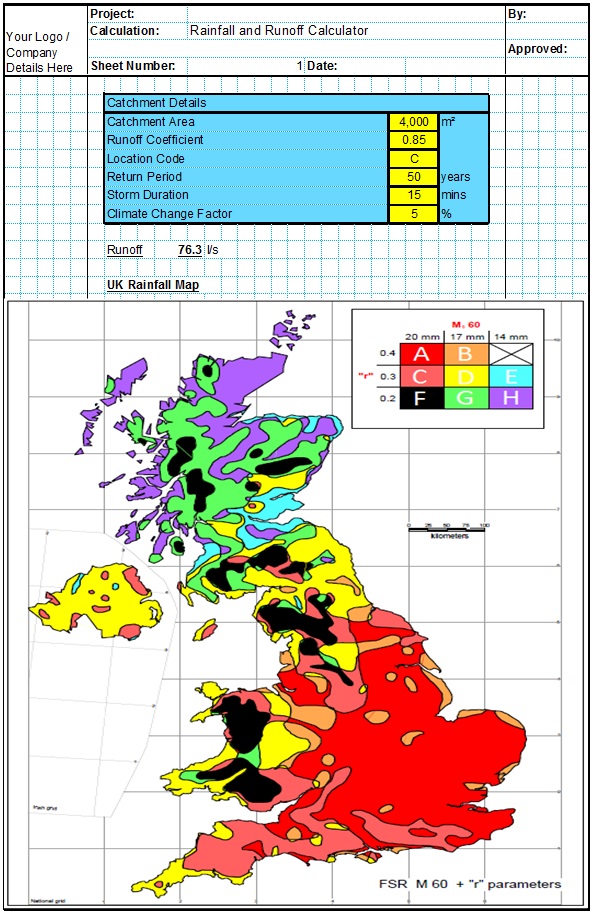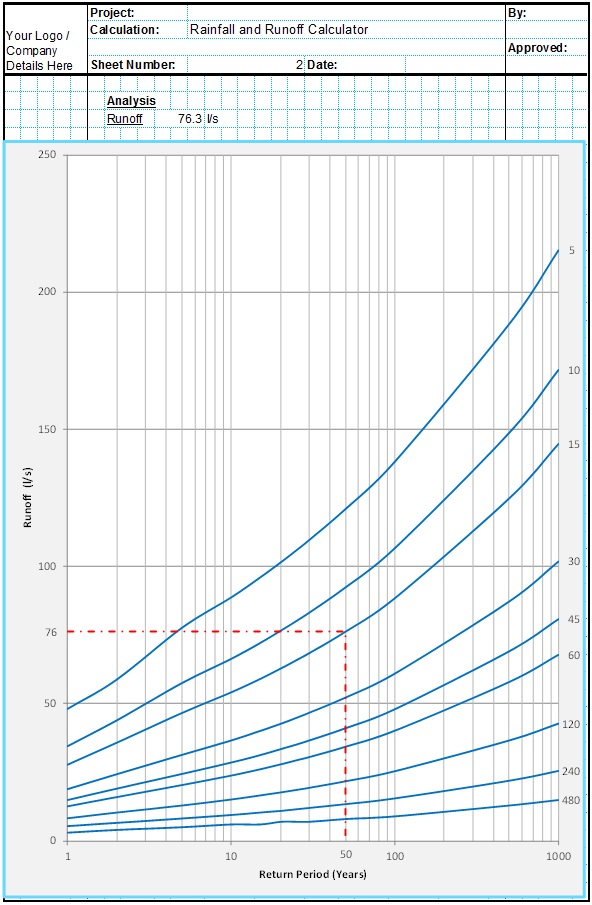The fill material used to backfill the soakaway can also be included in the storage capacity of the soakaway. This is applicable for either soakaway pits or trench soakaways which are entirely backfilled, or for soakaway crates or soakaways with precast concrete units where the annulus between the concrete unit and the natural soils is backfilled.
Soakaway Fill Material Porosity
In order to include the backfill within the storage capacity of the soakaway, the porosity or void ratio of the fill material must be known. For typical gravel backfill this porosity can be taken as around 30%-35%. For geocellular systems the porosity can be 95% or higher. The porosity of the specific back fill material used should be acquired from the supplier or from testing. If a value higher than around 30% is assumed, this should be confirmed through material testing.
For preliminary design purposes a list of typical values is presented below. The lower bounds relate to tightly compacted poorer quality material, the upper bounds to loosely compacted higher quality materials;
| Backfill Porosity | Lower Bounds (%) | Upper Bounds (%) |
| Geoculluar Systems | 90 | 95 |
| Large Clean Stone | 40 | 50 |
| Uniform Gravel | 30 | 40 |
| Graded Sand or Gravel | 20 | 30 |
Stone Aggregate Fill
The stone aggregate fill should typically be single sized coarse gravel, pea gravel, Type B or Type 6C material or 4/40 aggregate in accordance with BS 7533-13.
Where the backfilled areas a subject to loadings, from traffic for example, an assessment of the load capacity must be made. The low fines content means that any load bearing capacity is provided by point to point contact between aggregate particles. To maximise the friction and interlock between particles they should be angular and rough. In this case crushed rock should be used, never rounded particles such as marine aggregates.
The aggregate should be specified in accordance with BS EN 13242. Suitable grading and specification info for 4/40 aggregate material is shown below.
Fill Material Installation
The stone aggregate installed either within the pit or between the pit and the precast units should be placed in lifts of around 300mm and compacted using plate compactors or similar. While the fill material itself will be relatively self-compacting, the mechanical compaction of the aggregate is essential to ensure that there are no voids between the geotextile and the excavation walls which can lead to settlement problems and accelerated geotextile clogging.
Care must be taken to ensure that there is no mixing of the natural soils and the stone aggregate. Any stone aggregate contaminated with natural soils must be removed and replaced.
The stone aggregates should be clean. If fine materials may have contaminated the aggregates it must be washed prior to placing. Any fine materials installed in the pit will clog the geotextile and reduce the infiltration rate achieved by the soakaway.
Related Spreadsheets from CivilWeb;
Soakaway Design Spreadsheet
This spreadsheet calculates the requirements for a soakaway system and assists the user to design a suitable system.
Attenuation Design Spreadsheet
This spreadsheet calculates the requirements for a attenuation system and assists the user to design a suitable system.
Runoff Calculator Spreadsheet
This spreadsheet calculates the design runoff flow for a site in accordance with the a number of different methods including the Wallingford Procedure.
Full Drainage Design Suite
Full drainage design suite (50% Discount) including 7 spreadsheets;
- Colebrook White Pipe Design
- Manning Pipe Design
- Manning Open Channel Design
- Linear Drainage Design
- Runoff Calculator
- Attenuation Design
- Soakaway Design
